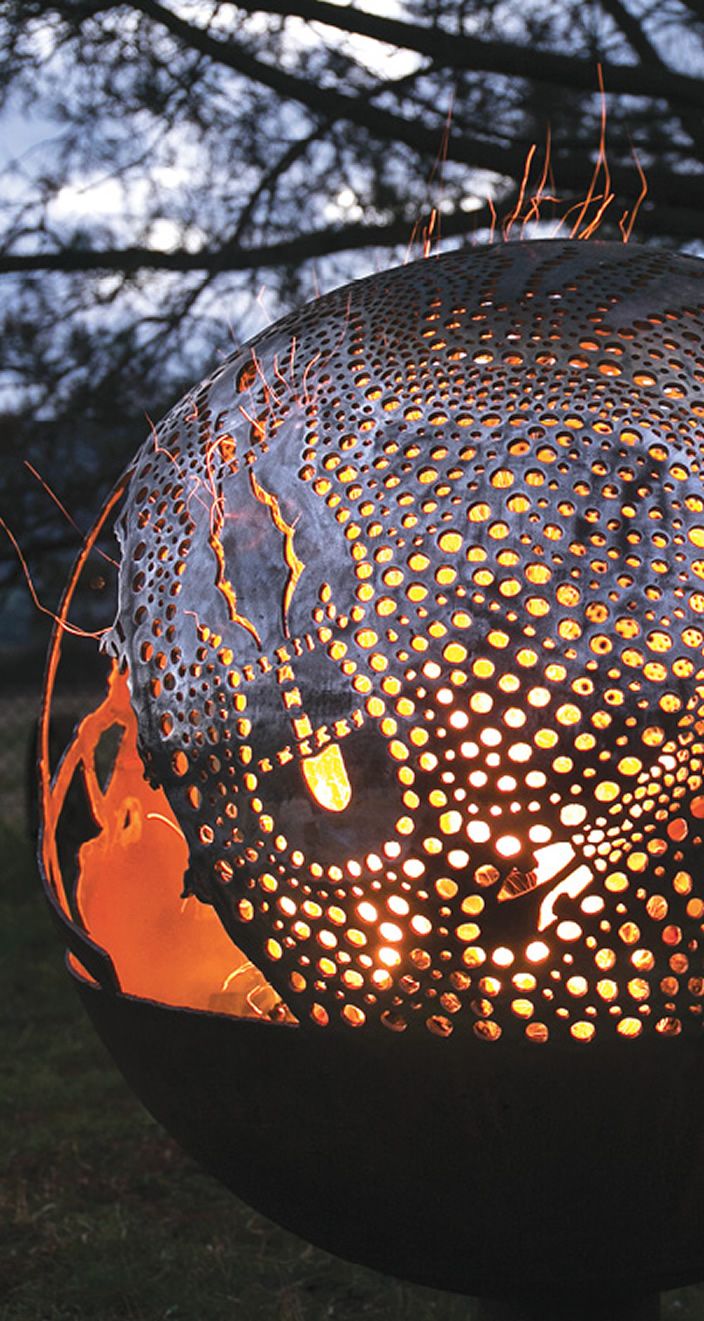“A fire pit is not a traditional Aboriginal object, but it is a gathering place, associated with story telling, food and warmth,” Alan said.
“We thought we could use it for smoking ceremonies, and give it a deeper significance.
“Staff at the school were involved in a traditional smoking ceremony and learnt more about Aboriginal spirituality and connection to country during the staff spirituality day in 2016.
“We wanted to learn more about the significance of the Wiradjuri people’s connection with land and how it impacts on us in our environment and school and we wanted to hold events at various times of the year that symbolise being connected with the people and the land.”
The school does not have a high percentage of students that identify as Aboriginal – of the 650 students no more than a dozen are Aboriginal at any one time.
Alan said the college would like to increase that number, and the visible symbols around the school provide a welcoming atmosphere.
“Symbols are important to our community and our school to say we are serious about walking towards the Wiradjuri in terms of reconciliation and that they would feel comfortable being part of our school.”
Alan said staff and parents had been excited by the opportunity these symbols provide to act as reminders of our Aboriginal heritage and community.
“The parent body is very positive about our symbols and see them as important steps to understand cultural heritage.”
During this year’s NAIDOC week local elder Jimmy Ingram and his grandson Peter came into the school to perform a smoking ceremony and explain the significance of it to all who attended, including students and staff from visiting primary school St Mary’s Primary School, Yoogali.
The event was also livestreamed on the school’s website.
‘It was a powerful and emotionally moving ceremony,” Alan said.
Senior students doing Studies of Religion, which includes a component on Aboriginal Spirituality and Dreaming, gained a deeper understanding by participating in a real ceremony, Alan said.
Artist Michael Lyons provided the drawing used to decorate the fire pit.
“When the principal came to see me, I said he should base the fire pit on my humpy. I have a summer and winter humpy on my property,” Michael said.
Michael’s artwork for the fire pit includes a snake, a platypus, a turtle and a didgeridoo player.
The snake represents ‘law’. Michael said under traditional law if someone did something wrong they would have had a tiger snake or western brown snake thrown on them.
“It might not happen straight away, but three months, six months or 12 months later they might throw the snakes at them while they were sleeping. It made you not want to do anything wrong.”
Michael said the platypus is a totem. “Where he’s swimming around there’s fish or yabbies. He’s a quiet fella that doesn’t say much but he’s good because he means lots of food”.
“The turtle symbolises food and the didge player is something everyone can recognise straight away as Aboriginal.
“The smoking ceremony is all about cleansing. We usually use a bowl that can be moved wherever you want to take the smoke. That way you can cleanse everything. It’s a way of refreshing and starting again.
“I think the thing they do in the church with the smoke is the same thing.”
It is a long standing tradition in Catholic masses to spread incense, which can be interpreted in many ways, for instance prayers going heavenwards, and as a form of blessing.
Michael Whipps, the custom fire pit artist who constructed the school’s piece, said working with Michael Lyons had been an educational process for him.
“When Alan asked me to construct the piece, and that they wanted it to be Aboriginal, I did not believe I was qualified for that, not being of Aboriginal descent, so he got me together with Michael and we were able to collaborate.
“It was a great experience. The flat artworks that he gave me I turned into three dimensional images for the fire pit. He told me how the animals are drawn divided because when food was divided it was split in particular ways. The elders would get the best cuts like the thigh or tail, the hunters, women and children other cuts.
“We represented these divisions when we created the fire pit.
“I thought it was important to stick with that as Wiradjuri elders will be holding smoking ceremonies at this fire pit,” Michael said.
References
https://adoremus.org/2012/02/15/holy-smoke-the-use-of-incense-in-the-catholic-church/
http://www.sandhillsartefacts.com
http://whippsdesigns.com.au/category/spherical-fire-pit/




































































































































